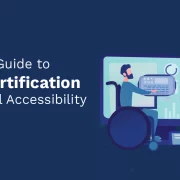
Maximizing Conversions: Top 5 AEM Personalization Techniques You Need to Try
Summary
Learn top techniques for personalizing experiences with AEM to boost conversions. This article provides actionable insights on leveraging AEM’s features for improved engagement.
With the dynamic and changing nature of consumer needs, having a solid online presence matters a lot for businesses. Businesses with a strong internet presence can grow in the form of more customers, income generation, and strong connections with suppliers. One of the ways to do this is by investing in a Content Management System (CMS). Content is certainly the most crucial aspect of a website, and a robust CMS will bring in more visitors to the site. One of the most effective CMS tools used is the AEM (Adobe Experience Manager).
McKinsey reports that about 71% of consumers look for personalized interactions with the business. This article delves into various techniques for AEM personalization, harnessing the capabilities of content management systems and digital asset management to craft seamless, optimized, and customer-centric experiences across web, email, and mobile channels, ultimately aiming to maximize conversions.
Table of Contents:
- Understanding Adobe Experience Manager (AEM)
- Why is Content Personalization Important in AEM?
- Top 5 AEM Personalization Techniques to Maximise Conversion
- Conclusion
Understanding Adobe Experience Manager (AEM)
Adobe Experience Manager is a leading content management system that allows content managers and team members to fully manage their website presence and provide the most customized user experience. You can develop, administer, and disseminate scalable, context-driven communications across nations, goods, services, and businesses using Adobe Experience Manager CMS.
AEM CMS enables teams to produce brand and national site experiences 23% more productively and 66% faster. CMS from Adobe allows you to create customized online experiences that meet the specific needs and preferences of your clients. Having this powerful program in your toolbox makes it easy, quick, and hassle-free to set up and maintain an enterprise-level content management system.
Also Read: AEM and Platform Services: Enhancing Personalization and Customer Experience
Why is Content Personalization Important in AEM?
By using AEM personalization techniques, content managers can create unique content for a better consumer experience and interaction. Some of the reasons why content personalization in AEM is essential are:
1. Better User Engagement
One way to gain personalization in AEM is by tailoring content and creating more interactions as per user behavior. When content on a website is relevant to their interests and needs, users will engage with it, stay on it longer, and become buyers or devoted supporters.
2. Enhanced Customer Satisfaction
One of the ways customers get satisfied is to offer them what they are looking for. AEM’s personalization features allow you to deliver content that is tailored to each customer’s unique demands, which will improve user satisfaction.
3. Enhanced Customer Loyalty
When users believe a website or app respects their choices and provides relevant content, they are more likely to come back and become loyal patrons. Using content automation methods like AEM personalization tools facilitates the establishment of long-lasting relationships with clients.
4. Optimized Content Strategy
The personalization tools in AEM provide insightful data and comprehension of user behavior. This data may help direct your content strategy by demonstrating the most successful types of content, how they relate to different audience demographics, and how to enhance your content to meet user needs.
Top 5 AEM Personalization Techniques to Maximize Conversion
Using AEM for content personalization can help grow businesses, and manage and deliver compelling digital experiences. Let us now check the top 5 techniques of AEM personalization for better conversion rates.
1. Optimizing Assets for Better User Interface
Website assets can be anything that increases the user experience, from files and collections to shared links and templates. This module is where you keep all your photos, movies, GIFs, and related custom versions.
Make sure your website loads swiftly and effectively by optimizing your assets. One of the best ways to optimize your assets is by using Adobe AEM DAM (digital asset management).
- Using this digital asset management, a content manager can create, manage, and deliver different assets on the website.
- Since AEM carries workflow features, you may save and arrange all your assets in a way that, depending on the path they take, you can retrieve them easily.
- AEM helps with the minification of HTML, JavaScript, and CSS using the built-in tools.
2. Using Workflow Features for Content Management
Maintaining an engaging and current website requires effective content management.
- Using the practical workflow feature by ARM, you can streamline the process of approval, publication, and content production. One way to do this is to create an automated workflow that will save time and errors.
- Easily design approval procedures using Adobe Experience Manager, which includes editors, managers, and content creators, among other stakeholders.
This guarantees that only content of the highest caliber reaches your audience and aids in the maintenance of a consistent review process.
3. Personalizing Website Content
Modifying or personalizing website content can boost user engagement, enhance website performance, and maximize conversion. You may provide your audience with a personalized experience by using the tools and capabilities that Adobe Experience Manager has to offer.
- One of the most effective techniques to follow for personalizing the content is audience segmentation. AEM assists you in building audience segments by considering account variables like browsing habits, location, and demographics.
- Users will have a more engaging experience with your material if you segment your audience so that you can customize it to each group’s unique requirements and interests.
4. Making Your Site Mobile Friendly
At present, mobile is considered the primary tool to bring in web traffic. It’s crucial to provide mobile app customers with more than simply a helpful search box; for example, reduce the character count of result descriptions to make them more appropriate for a small screen.
Mobile page customization is quick and straightforward using Adobe AEM. There’s no excuse to ignore your mobile consumers with a UI this user-friendly.
5. Improving Visitor Search Experience
Adobe Analytics, available on the AEM dashboard, allows content managers to know what visitors are searching for and what keywords they use to land on your website.
Analytics will further help you understand what search expectations are missing and what other types of missing material are on your website. They are accustomed to a search box with autocomplete question suggestions because of external search engines. Assist them in finding their way!
Also Read: Creating Dynamic and Personalized Web Experiences with AEM
Conclusion
Mastering AEM personalization techniques empowers businesses to tailor customer experiences effectively, driving higher engagement and conversion rates across diverse digital channels. By leveraging the capabilities of content and digital asset management systems, organizations can foster stronger connections with their audience and achieve greater success in their online endeavors.
If you want to stay ahead in the online website ranking competition and deliver a unique digital experience to your audience with AEM, Hurix Digital can be of assistance to you. Hurix Digital helps businesses by deploying effective AEM solutions according to the unique needs of your business. Hurix Digital is your one-stop solution for everything from content optimization, digital asset management, and personalization to workflow automation. Get in touch with us to begin your journey toward maximized conversions today!

Currently serving as the Vice President of Technology Delivery Operations at HurixDigital, a prominent global provider of digital content and technology solutions for publishers, corporations, and educational institutions. With over 16 years of experience spanning EdTech and various domains, I hold certification as a SCRUM Product Owner (CSPO). My expertise includes operations, finance, and adept people management skills.





















